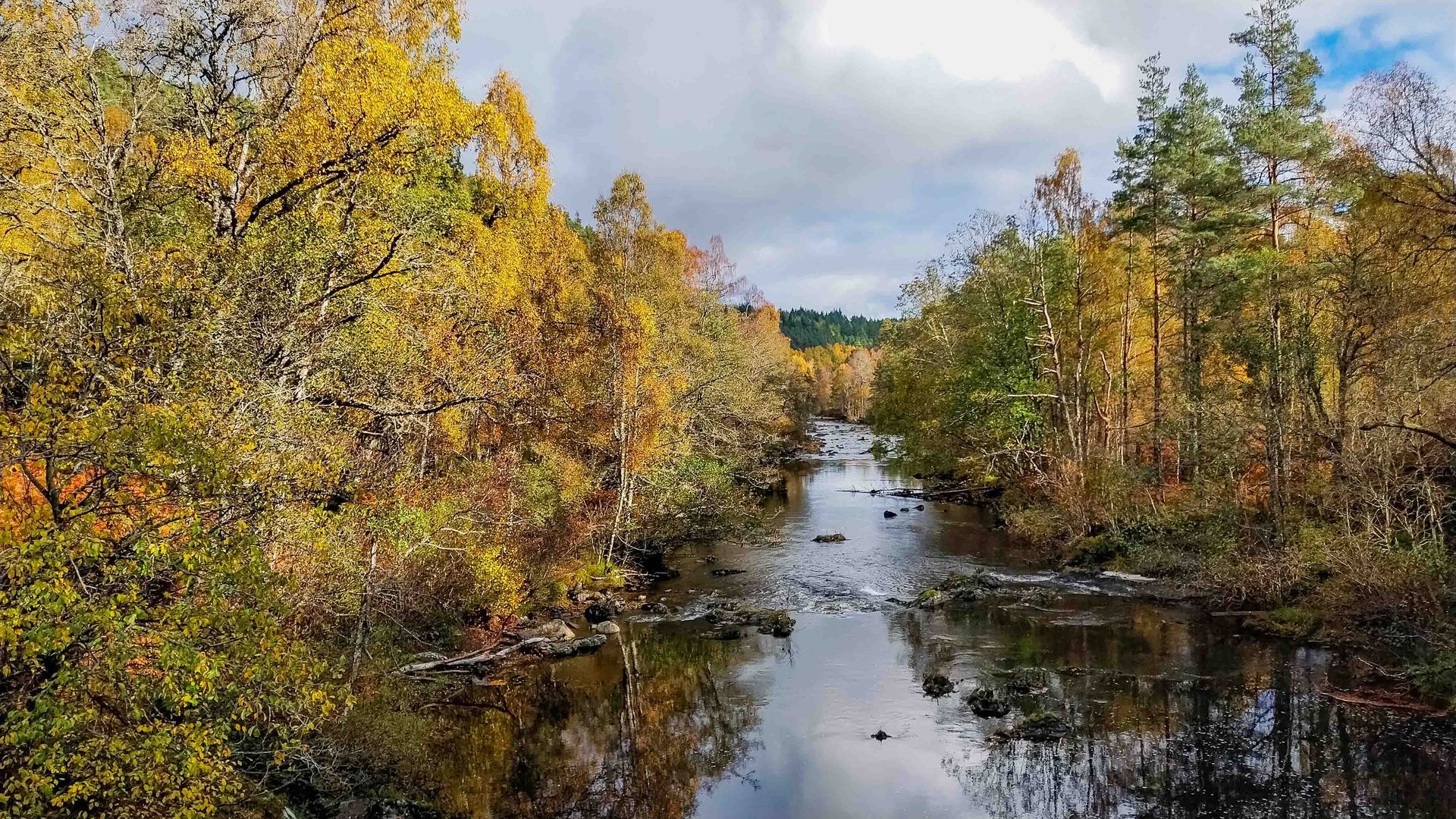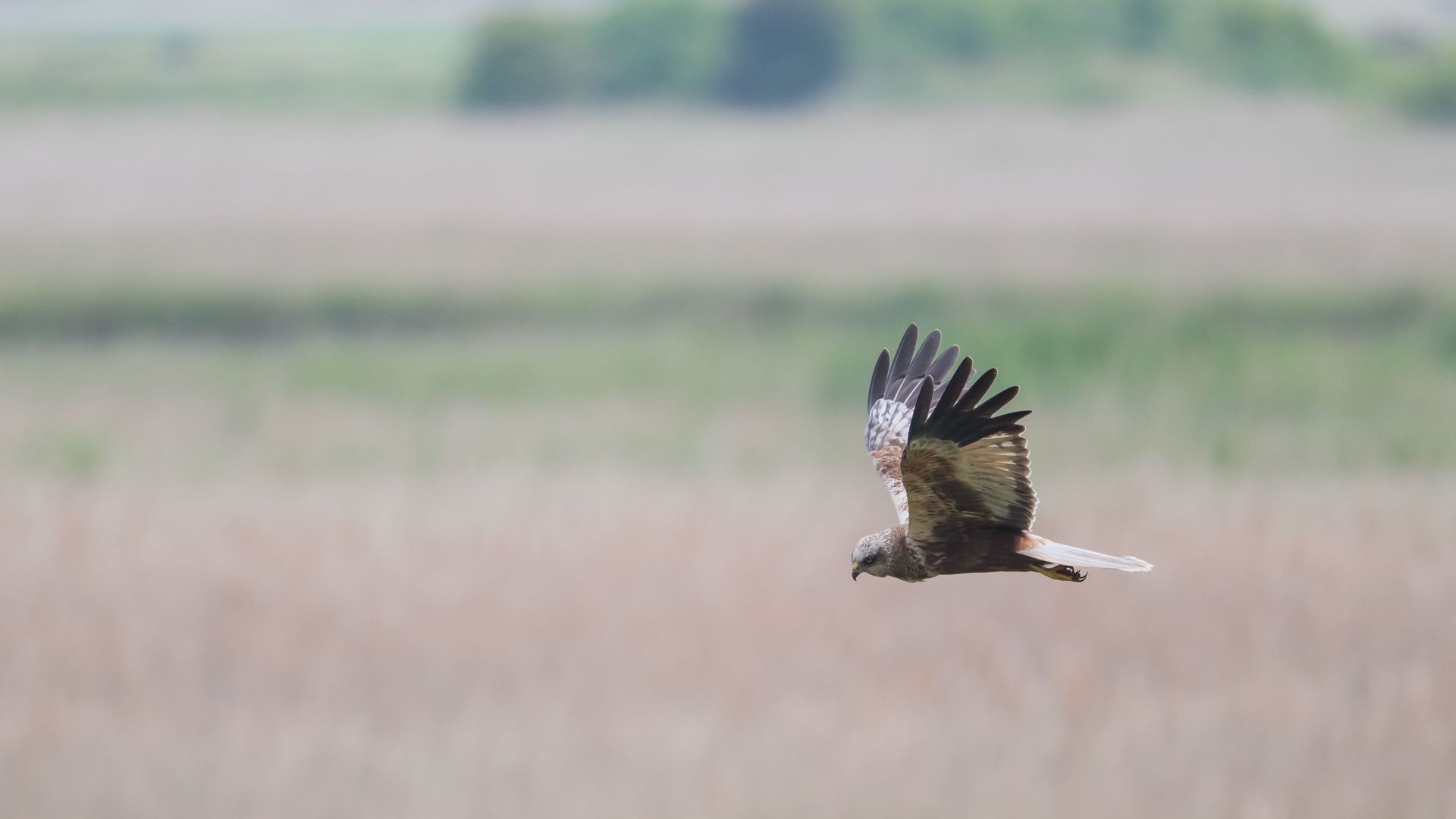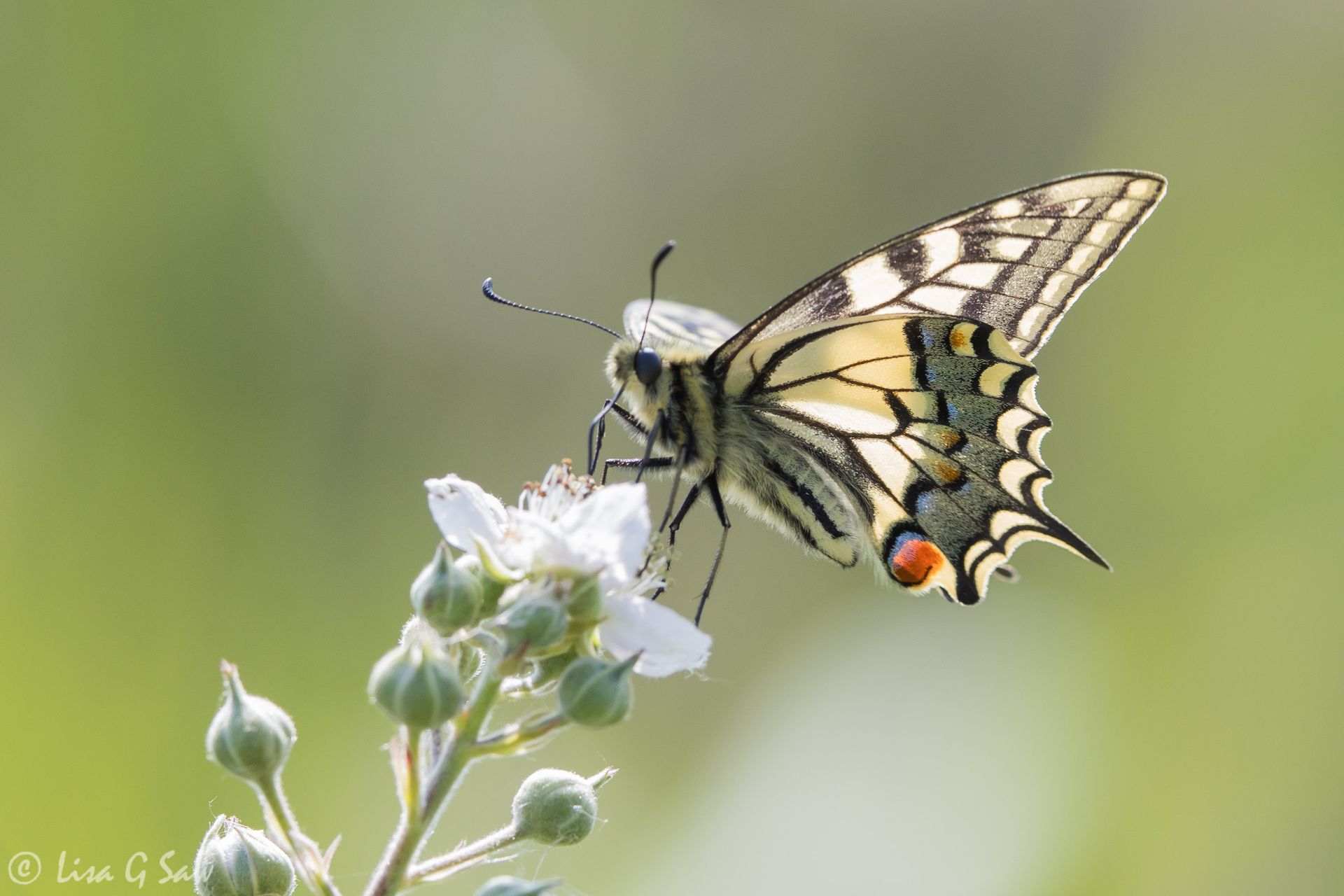Visiting Islands Iona, Lunga and Staffa
June 2024
It was really wonderful to have two full weeks on the beautiful Isle of Mull in the spring. It gave us plenty of time to get around, explore and also relax. I've already written about the three different outings we had to
Duart Castle during our time on the island, and how we were staying in Dervaig for the first week. During the second week, we had an equally fabulous self-catering cottage in Pennyghael, along the shores of Loch Scridain, which is in the south west part of the island. It was a great base for visiting the islands off the west coast of Mull via Fionnphort (below).
IONA
On our first day in the south, we headed over to the small inhabited island of Iona. One of the main draws to the island is to hear the sound of the Corncrake calling. It's one of just three places where they still nest in the UK. Breeding pairs have dropped so significantly over the years, as farming practices have changed, it is now considered a rare bird in the UK.
Unfortunately, our best window of opportunity to visit the island was on a day when it was quite windy. It didn't affect our short 10 minute ferry ride across the Sound of Iona, but it meant we'd have next to no chance of hearing the Corncrakes calling above the sound of the wind. There was even less chance of seeing one as they're such a secretive bird, nesting in the tall grasses, staying well out of sight. But, we did at least try to hear them and headed over towards the abbey. On our way there, we walked through the remains of the old nunnery. That was when I spotted this juvenile Pied Wagtail.
Sadly, as predicted, we didn't have any joy hearing the Corncrakes near the abbey, but we did see some other delights in that area, including several hirundines. Although I'd already spent plenty of time photographing the Swallows at Duart Castle, I was just as pleased to see this one perching on the wire. How lovely to be able to fully appreciate the red on the head, its tiny claws clasping the wire and its long tail - none of which you can appreciate when it's on the wing.
Whilst birds were the main attraction for us on the island, I did spot this rather attractive caterpillar. Bob recognised it - a Garden Tiger Moth caterpillar. It wasn't a moth I'd seen before, but as luck would have it, this summer I saw my first one in Bob's garden back home. It's nice to be able to see what the caterpillar may have turned into, if it lived that long.
From the abbey, we walked back towards the village of Baile Mor and then continued southwards along the coast. It was stunning. There were so many lovely little bays along the way and better still, we were able to enjoy some sunshine too, in between rain showers.
When we reached the bend in the road, we followed it heading west across the island for a spell, until we reached a display board. It indicated prime locations for where the Corncrakes were breeding. We took note and throughout the course of the day we visited several of the sites, and others too that looked like good possibilities, but still not a squeak was heard from them.
I really enjoyed our time spent in the lower part of the island. We found a bench on the east side overlooking the beach where we could enjoy our lunch. Then afterwards, we went exploring, walking along the beach and scrambling over the rocks, down as far as Sand Eels Bay. Along the way, a pair of Oystercatchers were making quite a racket. They seemed a bit put out by our presence. We also saw a family of Rock Pipits skulking around the rocks. They blended in so well, it was easy to lose sight of them until they began fluttering their wings again. Then as we headed north again, closer to some grassy areas, we spotted some Wheatears and Meadow Pipets (below). The one on the post was seen close to the abbey. We tried one last time to hear the Corncrakes in that area, approaching this time from the east side. But needless to say, we still didn't have any luck.
By this time, we decided to head to the gift shop and console ourselves with an ice cream each. We sat outside to eat them, even though it was still quite windy. Then suddenly, Bob said he heard a Corncrake. Sadly, I didn't hear anything. We sat quietly listening a while longer, but still nothing. So finally, we decided to head back towards the ferry, but to retrace our steps heading through the field and along the east side of the abbey. It was possible we might both get lucky, if the wind dipped enough. As we walked across the field, I saw another Wheatear and then a Hooded Crow. It was great to get the opportunity for a fairly close photo, and low down. It's a species we don't see in the south very often. Only if one is passing through.
With a little time still on our hands, we decided to sit down and rest for a while, near a wall, which provided us with some shelter from the wind. Facing eastwards, we were admiring the tall yellow Irises, whilst still listening out for the call of a Corncrake. Then suddenly, up popped a Sedge Warbler. Beautiful! I'd only seen one once before, but that time it was partly obscured by the tree it was in so I didn't get very good views of it. This time, it was clear as day perched at the top of the Iris. It was fabulous.
We remained seated on the ground a bit longer. Then suddenly, I heard it - a faint quack! It sounded just like one of those fake quacking noisemakers. Bob heard it too and we smiled at each other. Then we both heard it again, a bit clearer and louder. Excellent! Our patience paid off. Finally, we could leave happy!
LUNGA
Three days later, we were back at Fionnphort, but this time for a boat trip that would include both the islands of Lunga and Staffa. They are both a fraction of the size of Iona. We'd pre-booked this one months ahead, to make sure we didn't miss out. We were so lucky, because the weather was not so great on the island, but out at sea it was much better and the day started well with some lovely sunshine and not too much wind.
We had a couple of hours to spend on Lunga. To be honest, that wasn't really enough time, especially as we were keen to spend as much time as possible photographing the seabirds. We just had to make the most of the time we did have.
After we disembarked from the boat, making use of a floating pontoon, we scrambled over the rocks and made up way up to higher land. There was a good point where we could divert away from the path and overlook the water below. That was when we spotted a female Common Eider and her nine fluffy little ducklings.
Not far from them, on the rocks, was another youngester - a juvenile Oystercatcher, looking equally fluffy. It didn't possess the vibrant coloured red bill and legs that is so characteristic of the adult bird, but its bill was somewhat red, if not quite so bright.
We didn't linger there too long and followed the path up the cliff, past the first viewing area, which was really good for Puffins, and then continued onwards all the way to Dun Cruit. We'd been advised this was worth doing. It was the furthest point to walk to for seeing the seabirds. From there we could gradually work our way backwards. The path was steep and narrow in places, but worth the effort. The sight of all the seabirds nesting on the cliff opposite us was stunning. The noise was quite something too. The smell was less pleasing, but after a while I stopped noticing it!
That's a lot of Guillemots!
The Common Guillemots nest so close together. It's amazing that a pair can even find each other in the crowd when one goes out to sea for food and then later returns.
It was surprising how close we were to the seabirds on our side of the cliff. Though naturally, we didn't get too close to the edge, where they were perched. The Guillemots have a chocolate brown colour with a white belly when in the summer plumage, plus a fairly long thin bill compared with the Razorbills, which were alongside them on the clifftops.
Something I hadn't noticed before, when I've been to other seabird colonies in the UK and overseas, was that some had a white ring around the eye and extending backwards. This is known as a bridled morph. Apparently, this occurs at a greater frequency the more northerly you see them within their range. I was glad I had the opportunity to photograph the two different forms in the same photo, so you can clearly see the difference.
The Razorbills are also really striking and elegant and similar looking to the Guillemots in the body, however, they're black and white. Their bill is much thicker and shorter, with a white stripe down the tip and a white line extending from the eye to the bill. They also have a really striking orange mouth, which you can see a glimpse of below.
It was lovely to watch a pair bonding nearby. There was some beak contact and then a bit of scratching under the chin. I watched as one tilted its head back and then closed its eyes, as if experiencing absolute pleasure. Humans are not the only creatures to experience bliss.
Although there were lots of seabirds on the cliffs, many were flying around. There were constant comings and goings. A Great Skua was seen high above patrolling menacingly, probably hoping to steal some food from one of the other seabirds. There were a good number of Kittiwakes too. They're quite an elegant gull species, with their dark wingtips on an otherwise white and pale grey body and wings. It was fun trying to capture the birds in flight, but also very frustrating at times.
We also spotted a few Shags, like this one that flew in. It's funny how its body was facing one way, but his head was turned looking the opposite direction. Their long neck make that quite easy for them.
I wasn't just paying attention to those birds close to the cliff edges, there were some rocks behind us too and my attention was diverted to here for a while. For one reason, I saw a Shag nesting amongst the rocks. It was a fabulous opportunity to see one more clearly and much closer. They have quite amazing green eyes.
I also saw this male Wheatear coming and going from the rocks near the Shag and I soon found out why. A juvenile popped up out of a hole below the rocks where it had been hiding. I crept up slowly and quietly, hiding behind a rock myself, so as not to disturb it. Gorgeous!
Of course, it was the Puffins we wanted to see the most. I'm sure they're the lure for most people visiting the island. They are such characters! There's just something about the way they look that is so loveable. The red ring around their eye, the white face and of course, the striking colourful bill. Though, it's worth pointing out they don't always look this good (shown here in summer breeding plumage). In winter, the colour of the bill is less vibrant and the white on the face can be more grey, like they've been in a fight with some soot!
Like the Razorbill, they've also got a stunning orange mouth. It's a treat to get a view inside, and to see that orange tongue!
As we began our walk back along the path towards the main viewing area, we'd see some Puffins sitting on rocks and ledges and sometimes, a head would just pop up from out of nowhere. Although we couldn't always easily see it, there were so many burrows in the rock walls below us that were out of view.
As I already have a lot of flying Puffin photos from previous visits to Skomer Island in Wales, I spent more time watching their behaviour. Sometimes, they would spontaneously flap their wings, without taking flight. There was also quite a bit of scratching and preening.
Puffins seem used to the daily visitors that frequent this uninhabited island. They can display some curiosity towards us, but most of the time they went about their daily business ignoring us.
During the final 30 minutes of our visit, we both attempted some flying shots, even though the direction of the wind and the position of the sun wasn't favourable. I noticed not many of them were flying past with sand eels in their mouth, which was a bit disappointing and worrying. I hope it wasn't a sign that they were struggling to find the food source they need to feed their chicks.
STAFFA
From Lunga we headed to the island of Staffa. We only had an hour to spend there, but that was probably sufficient.
As we approached, we were immediately struck by the stunning basalt columns along the coast, which is similar to the Giant's Causeway in Northern Ireland.
We were lucky because our boat was one of the last to arrive on the island, which meant towards the end of the landing there were fewer people milling about. Most of our fellow passengers headed directly to Fingal's Cave after disembarking. However, knowing it would be really crowded, we decided to head in the opposite direction and go there a bit later.
We walked up onto the top of the cliffs and followed a path winding in towards the centre of the island first. We spotted a pair of Great Skuas on top of a hill and then flying above us briefly, before disappearing somewhere else. We then headed towards the coast again and saw several Shags standing like they do, with their wings held outwards to dry. There was also a seal hauled out on a rock.
From there we headed towards Fingal's Cave. Lots of people were passing us, heading back towards the boat, but no one else was heading in our direction. We stepped over the hexagonal columns, which were like stepping stones, following the line of the cliff wall. When we made it to the cave itself, there were only about half a dozen people there and a few divers wearing wetsuits swimming in the water. We took a few photos and then realised we were the only ones present on dry land. It was lovely to have a few quiet moments to ourselves and to capture a rare photo with no one in it. Although I've been to the Giant's Causeway, I was so struck with awe by the amazing rock formations at the cave and along the coastline. If only we could have spent a bit more time there to appreciate it!
It was a particularly poignant moment for Bob as Mendelssohn's Herbrides Overture, written after his visit to Fingal's Cave in 1829, was a piece he was extremely fond of and very familiar with. It evoked lots of memories for him, as his parents loved the music too. I think it was a little surreal for him to actually be there in person. I'm pretty sure he could hear the music playing in his head, he knows it that well. Needless to say, I've heard it quite a few times myself now, and it's a lovely piece of classical music. So now, when we listen to it, it will bring back the memoies of our time there.
From Staffa we headed back to Fionnphort. There was just one more little treat for us on our return journey. As we motored through the Sound of Iona a small pod of dolphins came and swam alongside us for a while. There was a distinct buzz of excitment in the air. We only had brief glimpses of them because of where we were standing on the boat, but they were lovely to see nonetheless. It was the perfect end to a great day out. If we return to the Isle of Mull in the future, I'm sure we'll be doing that trip all over again!
The next post in the series is
Otterly Fabulous.



